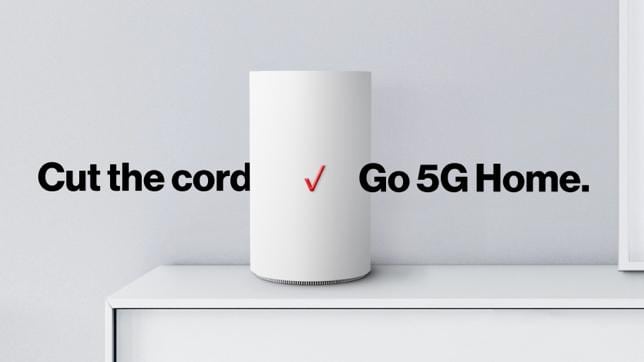Verizon 5G Home to start service Oct. 1
Verizon is laying claim to the first commercial launch of a 5G-based residential wireless broadband service, opening orders tomorrow for customers in select markets for its Verizon 5G Home service and aiming its marketing directly at would-be cord cutters. That service is slated to go live on October 1. The carrier said that typical speeds will be around 300 Mbps, with peaks of up to 1 gigabit depending on conditions.
“5G is here,” said Verizon CEO Hans Vestberg in a statement.
Verizon’s said that its service will initially be available in parts of Houston, Texas; Indianapolis, Indiana and Los Angeles and Sacramento, California. For customers who sign up via the company’s new FirstOn5G.com website, there is an introductory offer to get Verizon 5G Home for free for three months; after that, the service is $50 per month for current Verizon Wireless customers with a qualifying smartphone plan, or $70 per month for non-Verizon Wireless customers. Verizon said there are no additional hardware costs, and the monthly rate includes all taxes and fees.
“Verizon 5G Home customers should expect typical network speeds around 300 Mbps and, depending on location, peak speeds of nearly 1 Gbps, with no data caps,” the carrier said. “Verizon 5G Home is ideal for consumers looking to ‘cut the cord’ or upgrade from their current cable service.”
Verizon said that it will “rapidly expand its coverage area once we can install the new standards-compliant equipment from our vendors” and has plans for 5G mobility service in early 2019.
Ronan Dunne, head of Verizon’s wireless unit, tweeted the results of a 5G speed test in the Los Angeles area — and interestingly, 5G didn’t quite achieve the same speeds that Verizon has previously demonstrated with gigabit LTE using License Assisted Access.
Live from @LALIVE – my first #VZ5G speed test – welcome to 5G! @verizon #proud2bVZ pic.twitter.com/6QGfPeacNS
— Ronan Dunne (@RonanDunneVZ) September 11, 2018
In August of last year, Verizon had touted a joint project with Ericsson and Qualcomm Technologies that yielded downlink throughput of 953 Mbps by leveraging 4×4 multiple-input multiple-output, 256 QAM and four-channel carrier aggregation.
Verizon announced earlier this week that it had conducted the “first ever 5G call … on a commercial network with a simulated smartphone device,” per a tweet from Dunne:
We’re making #VZ5G impossible to ignore – First ever 5G NR call made today on a commercial network with simulated smartphone device https://t.co/dQLZgRnLY5 via @verizon
— Ronan Dunne (@RonanDunneVZ) September 10, 2018

